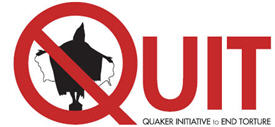Monday, August 27, 2012
Interview with Alfred McCoy on Torture & Impunity
Here is an interview with Professor Alfred McCoy on his new book Torture & Impunity, scroll down to August 23 - http://wpr.org/mobile/display_archives.cfm?Code=jca&Size=320
Thursday, August 23, 2012
Perfecting Illegality - Alfred McCoy
I believe this is the most important writing on American torture in the last several years. Alfred McCoy is a professor of history and author of several books. Here he shares the latest news and with plenty of background you will not find on the evening news. I highly recommend his new book- see below.
John Calvi founding convener Quaker Initiative to End Torture - QUIT!
John Calvi founding convener Quaker Initiative to End Torture - QUIT!
Tomgram: Alfred McCoy, Perfecting Illegality
By Alfred McCoy
|
Wednesday, August 1, 2012
Bush Torture Memos are 10 Years Old
The Bush Torture Memos are 10 Years Old! The Center for Constitutional Rights is calling for actions to note this anniversary and bring accountability. This link offers two short videos -
http://www.ccrjustice.org/get-involved/action/demand-accountability-u.s.-torture
The Quaker Initiative to End Torture - QUIT agrees that this 10 year milestone is a time to seek justice for American leadership that choose the policies and practice of torture.
http://www.ccrjustice.org/get-involved/action/demand-accountability-u.s.-torture
The Quaker Initiative to End Torture - QUIT agrees that this 10 year milestone is a time to seek justice for American leadership that choose the policies and practice of torture.
Subscribe to:
Comments (Atom)
